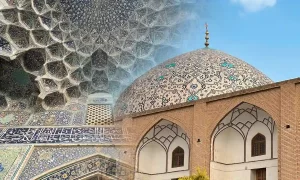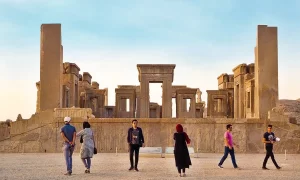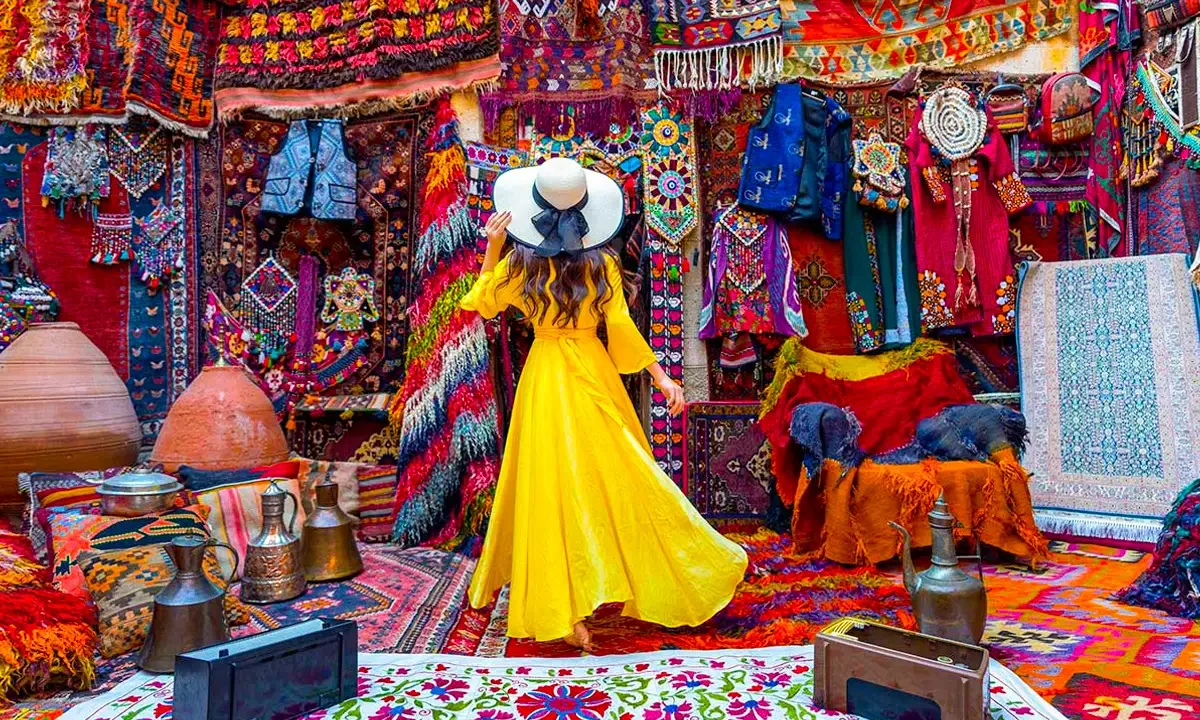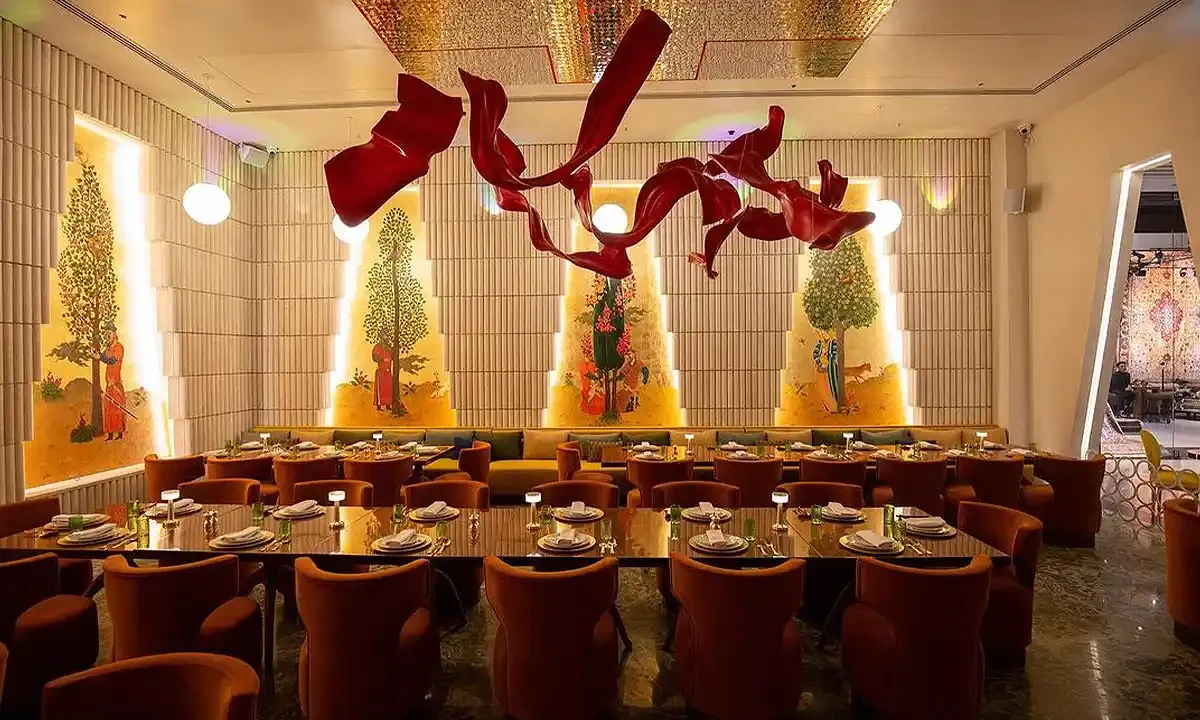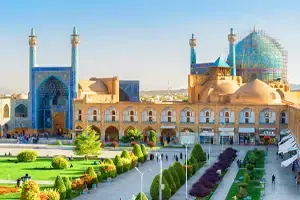Iran is mainly known as being the heart of Shia Muslims globally. The country is famous for its historic or modern mosques and few churches for its small Christian community. But what if I were to tell you that there’s also an Indian temple for Hindus located in Iran?
The Indian Temple in Iran is located in Bandar Abbas, one of Iran’s southern cities in Hormozgan province. In the late 19th century, many Indian traders explored the waters of the Persian Gulf. And because of their presence on the southern coasts of Iran, this temple was constructed as their sacred praying hall. Nowadays, this remarkable structure is a testimony to the Indian influences in Iran. Let’s dive a bit deeper to explore this peculiar place.
The History Behind the Indian Temple in Iran
Bandar Abbas, a bustling port city in southern Iran, hosts a unique cultural heritage, The Indian Temple. This Hindu temple is a noteworthy landmark. And if you’re wondering why, here are some key points about the history and significance of the Indian Temple:
Historical Connections of the Indian Temple
The temple was constructed back in 1892. It was during the reign of Mohammad Hassan Khan Sa’d-ol-Malek, the then ruler of Bandar Abbas. The Indian traders also were a part of the Indian Temple’s construction.
The presence of an Indian temple in Bandar Abbas reflects historical ties between India and Iran, particularly during periods of trade and cultural exchange along the ancient Silk Road.

Architectural Influence of the Indian Temple
The Indian Temple’s architecture is heavily influenced by the traditional style found in other Hindu temples. It consists of a central square room with the main dome. Other recognizable features of its architecture are intricate designs, vibrant colors, and ornate carvings. This style reflects the rich artistic heritage of India and showcases the fusion of Indian and Persian cultural elements.
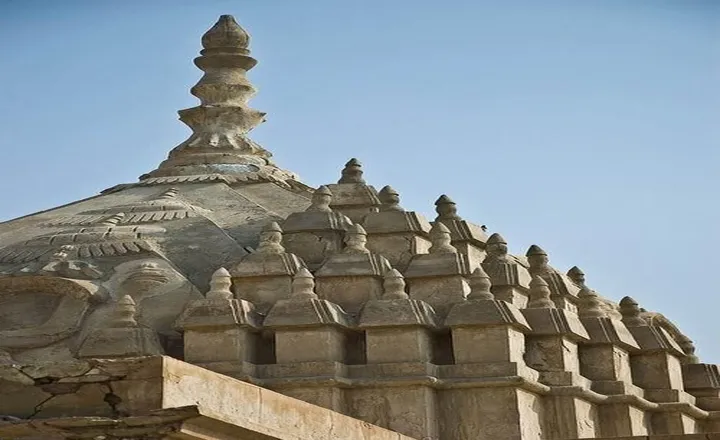
Cultural Symbolism of the Indian Temple
The Indian temple serves as a symbol of cultural diversity and religious tolerance in Bandar Abbas and Iran as a whole. It stands as a testament to the city’s multicultural identity and its history as a melting pot of different cultures and traditions.
Community Presence of Indians
The presence of an Indian temple in Bandar Abbas also signifies an Indian community in the city, which may have migrated there for trade, employment, or other reasons. The temple likely serves as a focal point for religious and social gatherings among the Indian diaspora in Bandar Abbas.

The Indian Temple Is a Tourist Attraction
The Indian temple is a place of worship and a popular tourist attraction in Bandar Abbas. Visitors are drawn to its exquisite architecture, historical significance, and cultural relevance, making it a must-visit destination for those interested in exploring the city’s diverse heritage.

Comparing Hindu Temple Architecture with the Indian Temple in Iran
- Remarkable Resemblance
The temple in Bandar Abbas bears a striking resemblance to Hindu temples, indicating intentional architectural and stylistic choices that draw inspiration from Hindu temple design. As stated earlier, it is a living testimony to the Indian community influences in Iran.
- Construction by Shikarpur
The temple was constructed by Shikarpur, who is described as one of India’s wealthiest individuals. It means that vast resources and expertise were invested in the construction of the temple. It further emphasizes its importance and significance as a landmark in the port of Bandar Abbas. Besides, it makes it exceptionally closer to the grandeur of Hindu temples in India.
- Relocation of Idols
Unfortunately, upon Shikarpur’s departure from Iran, he took all the idols from the temple to India. This implies a loss of cultural artifacts and religious symbols associated with the temple. Therefore, the Indian Temple in Iran lacks the stunning or symbolic idols that are usually found in popular Hindu Temples.

Architectural Traits of the Indian Temple in Iran
We are already familiar with the architectural aspects of the Indian Temple in Bandar Abbas. However, in this section, we’ll have a closer look at each of these traits.
- Intricate Designs
The temple architecture features intricate designs, indicating meticulous craftsmanship and attention to detail. These designs include geometric patterns, floral motifs, and religious symbols, contributing to the visual appeal of the temple.
- Vibrant Colors
Vibrant colors are used in the temple’s architecture, adding to its aesthetic appeal and creating a vibrant and visually stimulating environment. These colors are symbolic and hold cultural significance. They reflect the cultural and religious traditions associated with the temple.
- Ornate Carvings
Ornate carvings adorn the temple, showcasing the skill and expertise of the artisans involved in its construction. These carvings depict scenes from Hindu mythology, religious figures, or intricate patterns, enriching the visual experience for visitors.
- Fusion of Cultural Elements
The style of the temple reflects the fusion of Indian and Persian cultural elements. It highlights the historical and cultural exchanges between the two regions. This fusion is evident in architectural motifs, decorative elements, and construction techniques.

Last Word
The Indian temple in the southern city of Iran stands as a remarkable testament to the rich tapestry of cultural exchange and religious diversity. Its architectural splendor, adorned with intricate designs and symbolic motifs, reflects not only the spiritual traditions of India but also the harmonious blend of cultures in the region. As a sacred space for worship and contemplation, this temple embodies the timeless allure and universal significance of religious sanctuaries, serving as a beacon of spiritual enlightenment and cultural heritage in the heart of southern Iran.
FAQ
What is the historical significance of the Indian temple in the southern city of Iran?
The Indian temple holds immense historical significance, serving as a symbol of cultural exchange between India and Iran. Its construction and architectural elements reflect centuries-old traditions and highlight the region’s rich heritage.
Is Hinduism recognized in Iran?
No, Hinduism is not officially recognized in Iran. Zoroastrians, Jews, and Christians are the only recognized religious minorities in Iran.
Which is the oldest Hindu temple in Iran?
The Hindu temple in Bandar Abbas, known as the Indian Temple or the Vishnu Temple, is the oldest in Iran. It was constructed back in 1892 during the reign of Mohammad Hassan Khan Sa’d-ol-Malek, the ruler of Bandar Abbas.
Can visitors of other faiths or nationalities visit the Indian temple in Iran?
Yes, the Indian temple welcomes visitors of all backgrounds and nationalities. As a place of cultural and spiritual significance, it promotes understanding and appreciation of diverse traditions and heritage.
What cultural events or rituals take place at the Indian temple in Iran?
The temple hosts various cultural events and religious ceremonies throughout the year, including festivals, prayers, and community gatherings. These events provide opportunities for worshippers and visitors to experience the vibrant traditions and rituals associated with the temple’s heritage.


